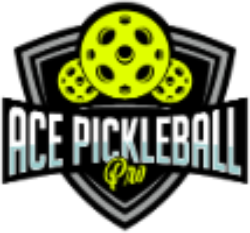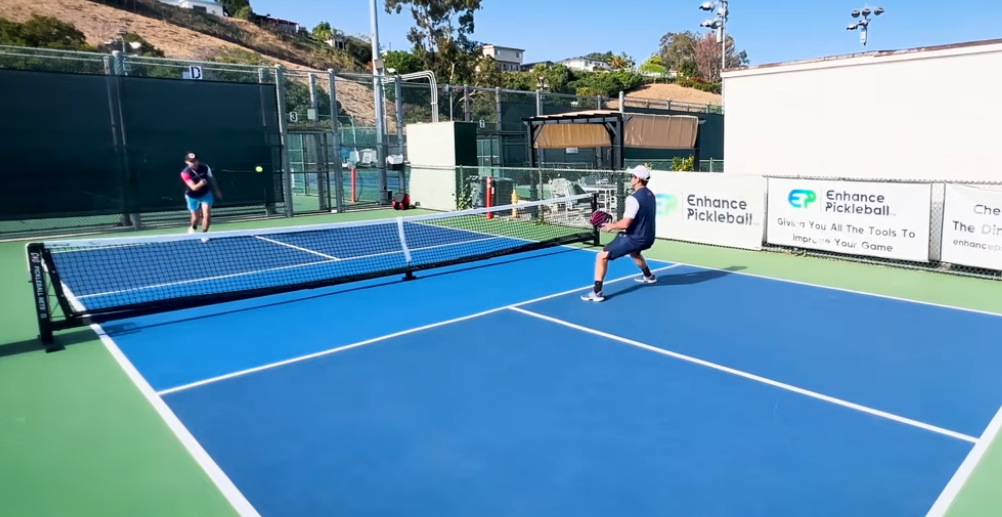Top 10 Pickleball Drills to Boost Your Game as a Beginner
As a seasoned pickleball coach, I’ve seen countless players improve dramatically by incorporating targeted, science-backed drills into their practice routines. This isn’t just a list of standard drills — this is a masterclass in skill development designed to push beyond conventional training. I’ll introduce advanced techniques that leverage sports science, decision-fatigue simulations, and cognitive load training to sharpen your instincts, improve shot selection, and enhance footwork in real-game situations.
Whether you’re stepping onto the court for the first time or fine-tuning your existing skills, these drills will help you gain a competitive edge by blending adaptive learning models, progressive decision-making scenarios, and real-time performance adjustments.
Why These Drills Outperform Conventional Training
- Neural Plasticity and Adaptation: Combining unpredictable drills with varied shot types enhances the brain’s ability to adapt quickly in dynamic match scenarios.
- Biomechanical Efficiency: Focusing on precise footwork and paddle control minimizes wasted movement and generates power with less effort.
- Cognitive Load Management: Incorporating decision-making under fatigue builds resilience, improving performance under real-game pressure.
1. Dinking Dance X: Mastering Control + Cognitive Flexibility
Why It’s Critical:
Dinking isn’t just about soft shots — it’s about rhythm, consistency, and controlling the net game. A strong dink disrupts your opponent’s timing and forces errors.
✅ Progressive Pattern Recognition: Begin by dinking straight ahead and cross-court. Introduce random shot variations mid-rally, forcing you to adjust your dink placement dynamically.
✅ Neuro-Engaged Footwork: Add lateral shuffling to incorporate precise foot positioning while maintaining paddle control. Include sudden direction changes to develop split-step timing.
✅ Cognitive Load Integration: After 5-7 shots, introduce decision tasks (e.g., identifying colors or counting backwards) to simulate mental fatigue, improving decision-making under pressure.
Pro Insight:
Alternate between forehand and backhand dinks while moving along the kitchen line. This develops ambidextrous control and balance, ensuring you’re ready for any incoming shot. Learn more about mastering dinking strategies to gain confidence at the net.
2. Serve and Return Infinity Loop: Neural Adaptation + Return Precision
Why It’s Critical:
Your serve and return set the tone for every point. A strong serve controls the pace, while a precise return positions you for immediate offense or defense.
✅ Zone-Based Targeting Progression: Break the service box into zones and practice serving to specific areas with varying power and spin.
✅ Return-to-Offense Transitions: After returning deep, transition immediately to a split-step, preparing for an aggressive third shot or reset. This simulates high-level point progression.
✅ Decision Fatigue Integration: Serve and return 10 consecutive points while incorporating a mental task between each serve to simulate decision fatigue, reinforcing focus under pressure.
Pro Insight:
Work on adding deceptive spin variations to your serve. Slight adjustments in paddle angle can create unpredictable bounce patterns, catching your opponent off guard. Check out these pickleball serving tips for more ideas on increasing serve accuracy and variety.
3. Third Shot Drop Evolution: Game Simulation + Shot Variation
Why It’s Critical:
The third shot drop transitions the game from baseline to net, giving you strategic control of the point. A well-placed drop neutralizes your opponent’s advantage.
✅ Variable Shot Selection with Random Feeds: Practice alternating between third shot drops, drives, and lobs based on random feeds. This trains your brain to react instinctively during high-pressure situations.
✅ Trajectory Arc Mastery: Focus on creating a high, arcing trajectory that lands softly near the kitchen line. Simulate game pressure by adding movement before executing the shot.
✅ Position Transition After Shot: After executing your drop, move immediately toward the kitchen line, reinforcing muscle memory for effective net positioning.
Pro Insight:
To add unpredictability, mix in occasional third shot drives to keep your opponent guessing and prevent them from camping at the kitchen line. Learn the nuances of third shot strategy to dictate the pace of the game.
4. Volley Matrix Mastery: Fast Reflexes + Predictive Pattern Recognition
Why It’s Critical:
Volley exchanges at the net require precision, quick reactions, and paddle control. A strong volley game neutralizes hard shots and maintains offensive momentum.
✅ Rapid-Fire Volley Drills: Practice volleying with a partner at increasing speeds, aiming to maintain consistent contact while adjusting paddle angle for control.
✅ Pattern Recognition Matrix: Develop predictive reflexes by practicing sequences where your opponent mixes fast volleys, soft resets, and surprise dinks. Recognize and anticipate shot patterns to stay ahead.
✅ Paddle Angle and Grip Transition Practice: Switch between punch volleys, block volleys, and resets with minimal grip changes, reinforcing grip versatility.
Pro Insight:
Practice volleying with both forehand and backhand grips to develop ambidextrous reflexes. This helps maintain control in unpredictable net exchanges. Explore more on improving your volley game to stay aggressive at the kitchen line.
5. Around the World Circuit: Zone-Based Shot Selection + Movement Efficiency
Why It’s Critical:
Footwork and court positioning dictate shot quality and consistency. The faster you recover after each shot, the better positioned you are to control the next exchange.
✅ Zone-Specific Movement Drills: Move between five designated zones around the court, practicing different shot types from each position. Alternate between groundstrokes, volleys, and dinks.
✅ Split-Second Shot Decisions: Force rapid shot selection after moving to each zone, simulating unpredictable match conditions.
✅ Movement Recovery Timing: Focus on returning to an athletic ready position after every shot, reinforcing correct footwork habits.
Pro Insight:
Incorporate timed intervals between shots to increase intensity and improve reaction time. Build endurance and speed simultaneously by mastering pickleball footwork drills.
6. Lob and Overhead Smash Intelligence: Mastering Power and Deception
Why It’s Critical:
Lobs and overhead smashes change the momentum of a point, forcing your opponent off the net or closing out weak returns.
✅ Lob Accuracy Progression: Practice hitting deep, high lobs with varying arcs to target the back of the court. Aim to land lobs within 2-3 feet of the baseline consistently.
✅ Overhead Smash Timing: Develop timing and positioning by simulating opponent lobs and focusing on making contact at the highest point for maximum power.
✅ Lob Recognition Drills: Alternate between practicing lobs and disguised drops, improving your ability to switch between offensive and defensive scenarios.
Pro Insight:
To disguise your shots, use consistent swing mechanics for both lobs and drops. This unpredictability forces your opponent into difficult guessing positions. Read up on lob and smash strategies to dominate high-ball exchanges.
7. Kitchen Line Reflex Shuffle: Footwork Precision + Anticipation Training
Why It’s Critical:
Dominating the kitchen line requires quick lateral movement, anticipation, and control over soft and fast shots.
✅ Lateral Shuffle with Random Feeds: Shuffle along the kitchen line while maintaining balance and reacting to varied feeds. Focus on quick adjustments to high and low volleys.
✅ Footwork Symmetry for Balance: Incorporate both forward and backward shuffling to maintain neutral foot positioning in unpredictable exchanges.
✅ Paddle Position Consistency: Keep your paddle up and ready during shuffling, reinforcing a defensive stance that allows for rapid reaction.
Pro Insight:
Add a split-step hop before each lateral movement to improve balance and speed. Learn how to dominate the kitchen line with these net positioning tips.
8. Rapid Fire Return Blitz: Fast Reflexes + Speed Adaptability
Why It’s Critical:
Handling fast-paced shots improves reflexes, shot placement, and control under pressure.
✅ Speed Variability Return Drills: Alternate between slow and fast incoming shots to build adaptability. Respond to each shot by adjusting paddle angle and grip dynamically.
✅ Anticipation and Pattern Recognition: Recognize visual cues that indicate the opponent’s shot intention and prepare to counter accordingly.
✅ Reaction Speed Development: Perform rapid-fire returns while incorporating movement between shots, simulating real-game conditions.
Pro Insight:
Focus on asymmetrical foot positioning to optimize balance and quick pivoting during rapid exchanges. Practice reflex training techniques to enhance reaction speed.
9. Cross-Court Precision Challenge: Angle Mastery + Tactical Shot Placement
Why It’s Critical:
Cross-court shots are strategically safer and create wider angles that disrupt your opponent’s positioning.
✅ Precision Shot Calibration: Practice hitting cross-court dinks, drives, and volleys while varying the shot pace and spin.
✅ Cross-Court Pattern Recognition: Identify patterns in your opponent’s movement and adapt your cross-court placement to exploit open angles.
✅ Alternating Grip Adaptation: Switch between forehand and backhand cross-court shots without compromising paddle control.
Pro Insight:
Develop spin diversity by incorporating slice, topspin, and flat shots into your cross-court practice to keep opponents guessing. Explore advanced cross-court tactics to sharpen your game.
10. Game Simulation Matrix: Decision-Making Mastery + Cognitive Flexibility
Why It’s Critical:
Simulating real-game scenarios helps players develop decision-making skills, adaptability, and shot selection precision under pressure.
✅ Scenario-Based Simulations: Set up points starting from different scenarios (e.g., receiving a lob, defending a smash) and play out points under simulated match conditions.
✅ Shot Pattern Mapping: Analyze common shot patterns during match-play simulations and develop an intuitive understanding of probable responses.
✅ High-Stakes Decision Fatigue Drills: Incorporate fatigue-based decision training by adding mental tasks between scenarios, reinforcing focus and strategic thinking.
Pro Insight:
To increase cognitive resilience, simulate match-like pressure with high-stakes scoring scenarios such as 9-9 in a game to 11. Explore strategic decision-making techniques to thrive under pressure.
Frequently Asked Questions: Science-Backed Answers
How can I improve my reflexes in pickleball?
Incorporate high-intensity reaction drills with random shot variations. Training under unpredictable conditions reinforces neural response pathways.
What’s the best way to handle pressure during matches?
Use cognitive fatigue drills to simulate high-pressure situations and develop mental resilience. Visualizing match scenarios also primes your brain for success.
How do I optimize my serve for accuracy and power?
Work on zone-based targeting combined with progressive power adjustments. Experiment with paddle angles and grip pressure to refine spin variations.
Key Takeaways for Dominating the Pickleball Court
-
Layered Learning Progressions: Master advanced skills by gradually increasing complexity and intensity in your drills.
-
Adaptive Decision-Making: Integrate situational awareness and mental resilience into your practice routines.
-
Neuro-Cognitive Integration: Combine physical skill development with cognitive load training for optimal performance under pressure.

